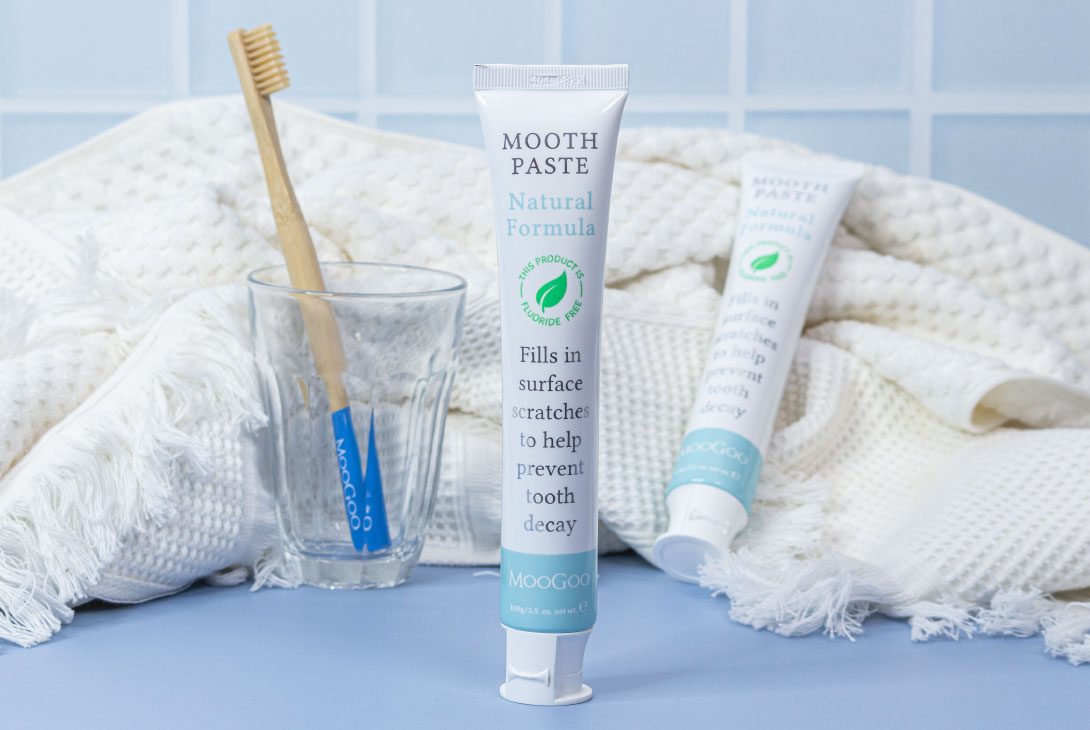
7 Facts You May Not Know About Toothpaste
Although we check in with our particular pastes every morning and night, most people don't know much about toothpaste at all. Like what toothpaste is typically made of, how it can change your taste buds or what people did before toothpaste was invented. We dug up a few friendly facts about toothpaste to give you conversation content to use at your next cocktail party.

1. Toothpaste formulations have barely changed since the 1960's
People are turning away from skincare, hair care and food products if they contain ingredients of concern, but isn't it interesting that toothpaste, a product that is literally ingested every morning and night, is one of the worst culprits of all? And yet, toothpaste has the least amount of concern, continuing to fly under the health movement radar.
We don’t know who toothpaste's publicist is, but boy they're good!
Toothpaste formulations have barely changed since the 1960's and some still contain chemicals that have since been banned from food. We like vintage cars and vintage clothes, but not vintage toothpaste. Want to learn more about toothpaste ingredients? Check out our blog on Healthy Toothpaste You Don't Need to Worry About Swallowing.
2. Glycerine Can Prevent Remineralisation
Glycerine is used in most toothpaste to help keep it feeling moist. However, it turns out that it can coat the teeth and as a result, prevent remineralisation (whether it be Fluoride or Calcium Hydroxyapatite!) and we don’t want that! Instead of Glycerine, we use Caprylic Capric Triglyceride (Fractionated Coconut Oil), which is a formulation of coconut oil that will remain a liquid regardless of the temperature it's exposed to. We use lots of coconut-based ingredients in our skincare and we're totally comfortable with using these in our toothpaste too.
3. Toothpaste Can Change How Your Food Tastes
Ever wonder why certain foods just don't taste the same directly after brushing? It’s not just a matter of clashing flavours. Toothpaste actually alters the way your body and taste buds interpret taste. It inhibits the taste receptors on your tongue that are responsible for detecting sweetness. Therefore, bitterness is heightened and sweetness is lowered, resulting in that all too familiar sour tang. Maybe save that glass of orange juice until lunch.

4. Don't Be Afraid of Baking Soda
According to the Mohs Scale of Mineral Hardness, (which measures the hardness of all minerals on a spectrum from 1 to 10) tooth enamel has a hardness rating of 5, and baking soda has a hardness rating of 2.5. For context, diamonds have a rating of 10. Despite baking soda having half the hardness of tooth enamel, it still creates enough gentle friction when rubbing up against it to dislodge plaque. Ergo, baking soda = good! Not only that, baking soda's pH (8.3) is believed to help make your mouth more alkaline, which is a good thing because those pesky mouth bacteria aren't happy in an alkaline environment higher than 6.5.
5. Herbal Toothpaste Has Only Been Around For 100 Years
It wasn't until 1850 that a dexterous dentist by the name of Dr Peabody had the bright idea of adding soap to dental powder in order to increase its cleaning potential. That gives some context to the phrase 'cleaning your mouth out with soap', doesn't it! Of course, this was commercial, chemical-filled soap and it took another century or so before smart guy Tom of Maine developed the very first herbal alternative in 1914. That was only just over 100 years ago! Not much has changed in toothpaste formulations since then ... until we made our first Fluoride Free Moothpaste with Hydroxyapatite!
6. That's a lot of Brushing
The average person only brushes their teeth for 45 to 70 seconds at a time when the recommended brushing time is 2 minutes each go. Even with cutting corners, the average person spends a total of 38.5 DAYS brushing their teeth over a lifetime. That is, in fact, A LOT of brushing.
7. Pig Hair Bristles, Eggshells and Crushed Bones
Well, there’s a sentence you don’t want to see when talking about toothpaste. 5,000 years ago, before toothbrushes were invented, the Ancient Egyptians made dental powder out of crushed ox hoof ashes and burned eggshells that were combined into pumice. Yummy!
Later, on, the Ancient Greeks and Romans improved on this recipe with the addition of crushed bones (and what an upgrade!). Although this improved the paste’s abrasive qualities, we’re fairly confident it didn’t make it taste any better.

Why Choose Fluoride Free?
Tooth be told, Fluoride can be a controversial topic. The fact of the matter is, toothpaste needs a remineralising agent to keep teeth healthy, and this is what Fluoride does in commercial toothpastes.
After years of development we've created a healthy toothpaste full of remineralisation properties, but minus the F-word (Fluoride - obviously! Get your head out of the gutter...). The great news is, this doesn't mean you have to skip the benefits. In fact, we searched tooth and nail to find the best remineralising substitute available: Calcium Hydroxyapatite!
Just like Fluoride, CH does a great job of remineralising teeth and repairing small cracks and scratches minus the unhelpful side effects, and we've combined it with other healthy ingredients so you don't have to worry if your kids end up swallowing a bunch.
Shop our Moothpaste Fluoride Free now!
